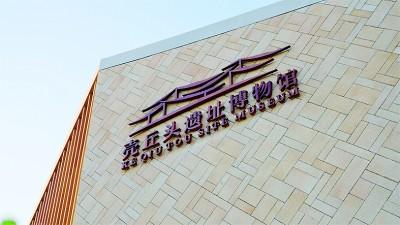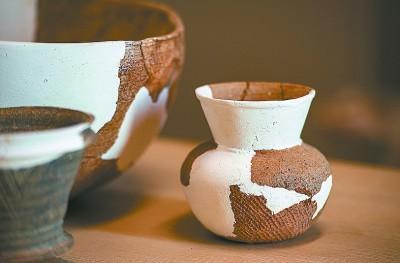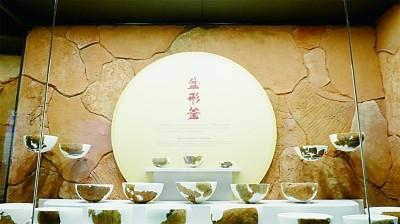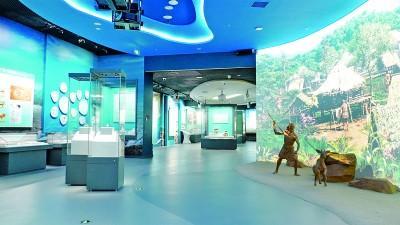Ancient pottery at Pingtan's Keqiutou site reveals cultural affinity across the Taiwan Straits
Updated:2025-05-21 | Lin Kongbo, Stephanie
The exterior view of the Keqiutou Site Museum
This May Day holiday, the Keqiutou Site Museum in Pingtan, off the coast of Fujian province and the closest place on the mainland to the island of Taiwan, drew throngs of visitors eager to step back into prehistory. As China's second international tourism island after Hainan, Pingtan offers more than just scenic landscapes—it is also home to profound archaeological connections linking both sides of the Taiwan Straits.
Nestled between sea and mountains, the museum's architecture mimics waves and ridges, blending into the island's natural contours. Inside, it houses Neolithic pottery shards dating back thousands of years, telling a story far older than modern borders. On the fragments of sand-tempered pottery—decorated with shell-tooth, net, and wave patterns—visitors glimpse a shared visual language that once stretched across the Straits.

Pottery unearthed from the Keqiutou site

Pottery unearthed from the Keqiutou site
Restored pottery kettles, jars, and bowls rest quietly in glass cases. Their surfaces are adorned with modest but vibrant motifs, each line etched with ancient ingenuity. "The earliest decorations may have been accidental—marks left by woven fabric or cords impressed on clay, which early people found not only beautiful but also useful for grip," explained Fan Xuechun, director of the Pingtan International Austronesian Research Institute.
These designs were not merely decorative. They served as a medium through which prehistoric communities observed nature and recorded life. Imprints resembling shell edges, bamboo pricks, or ocean waves became timeless patterns, reflecting a raw yet profound sense of beauty.
Surprisingly, nearly identical motifs appear on pottery from Taiwan's earliest Neolithic culture, the Dapenkeng Culture. The resemblance—especially in the arrangement of shell-tooth patterns and the fluidity of wave motifs—strongly suggests a cultural continuum. With Keqiutou slightly predating Dapenkeng, archaeologists believe it may have been one of the latter's sources.
Seafaring, it turns out, was already advanced in the Neolithic era. Archaeological evidence from sites like Xiying in Pingtan and Liang Island in the Matsu archipelago indicates that more than 7,000 years ago, people could navigate dugout canoes across coastal waters. By 6,000 years ago, their maritime skills had grown enough to traverse the Taiwan Straits in search of new lands.
"When the Keqiutou people migrated to Taiwan, they brought their pottery-making techniques with them," said Fan. "Many types, shapes, and decorative methods from this side of the Straits were preserved in what became the Dapenkeng Culture."
Despite thousands of years of evolution, Taiwan's prehistoric cultures never lost their connection to the mainland. "Members of Taiwan's indigenous Amis tribe were amazed when they saw our pottery supports," recalled Xu Guirong, deputy director of the Pingtan International Austronesian Research Institute. "They said these objects looked almost identical to the ritual tools they still use today." Many indigenous visitors from Taiwan find echoes of their traditions in the Keqiutou artifacts. "The bond between the two sides of the Straits was already formed in the Stone Age," Xu remarked.
In 2021, a team led by Wang Chuanchao, director of the Institute of Anthropology at Xiamen University, analyzed ancient DNA from Taiwan and confirmed that Taiwan's Indigenous populations, who belong to the Austronesian language family, originated from the Chinese mainland.

Keqiutou Site Museum in Pingtan, Fujian
Today, the Keqiutou site stands not only as a trove of archaeological treasures but also as a living conduit for cultural exchange across the Straits. Visitors, researchers, and scholars from across the Taiwan Straits regularly walk its hall; laboratories match artifacts with scientific data; and international forums bring experts together to discuss the roots and migration of Austronesian peoples. Together, they piece together a history that no body of water could ever wash away.
(Source: Guangming Daily)

